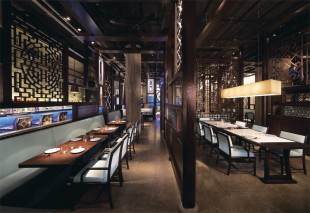

CUISINE FOCUS: Year of the Chinese

Middle East operators are capitalising on a gap in the market for authentic Chinese F&B
There’s been a surge in the number of Chinese restaurants hitting the regional scene in the last few years: from Hukama at The Address Downtown Dubai to Shang Palace at the Dubai Shangri La and The China Club on Dubai’s Baniyas Street, not forgetting of course, Chinese chain P.F Changs.
Then you’ve got Ruby Wu’s at the Radisson Blu Hotel in Doha, China Garden in Bahrain and Tang Chao in Kuwait – the list is endless.
And with 1,128% rise in Chinese and Hong Kong visitors to Dubai alone between 2001 and 2010, it’s no wonder.
The growing demand from Chinese visitors has impacted on the foodservice industries, not to mention the number of Middle Eastern visitors with China’s economy booming and predictions of it hitting more than 7.5% of its economic growth target.
Where ingredients themselves are concerned; suppliers of Chinese ingredients and foodstuffs have grown in the region.
“The local market for Chinese products is far better than what it used to be even some ten years ago. Finding simple things like bean sprouts back then was like mining for gold.
Now, products are very easy to find and most can be located in supermarket chains around the UAE,” chef George Chee of Long Yin at Le Meridien Dubai, told Caterer.
While in the UAE, competition is fierce on the Chinese F&B front, the situation in Riyadh is a little different, with the only real high-end hotel-based restaurant serving authentic Chinese cuisine being The Ritz-Carlton Riyadh claims chef de cuisine Hong Kong restaurant, Danny Khoo. And, he says, the most important thing for him is authenticity.
“We are known for our authenticity in preparation, beautiful ambiance and knowledgeable, attentive service. We do not compromise on authenticity of preparation nor do we alter recipes to semi-Chinese to suit patronage,” says Khoo.
Article continues on next page ...
But this isn’t necessarily the case where ingredients are concerned. As mentioned earlier, suppliers in this region for Chinese produce are fairly strong. Moreover, says Chee, it is important to think about availability and consistency.
“We try to stick to some local produce due to freshness and control over stocks. The few things we do order have maintained their price levels and any increase is negligible.”
Of course there are ancient Chinese delicacies including dog meat which for obvious reasons are not served in the Middle East. And naturally, palates in the Middle East vary widely from those in China.
Chee says Chinese food is “an acquired taste”, and as a result many Chinese restaurants adapt their offering to suit local tastes, but he adds, when people are looking for Chinese, they still want a hearty meal.
“We have none of that fine dining stuff where the plate is bigger than the two skimpy slivers of roasted duck. Come by and you will enjoy good quantities of China’s finest dishes in a friendly but chic ancient Chinese setting.”
What makes the setting as well as the décor and the authenticity of the food is the delivery. But it’s not necessary to boast a full team of Chinese chefs for this.
While Ritz-Carlton Riyadh’s Chinese outlet has three Chinese chefs, Long Yin carries two, including Chee out of the 11-strong team. “Diversity is important in any team, it allows for more ideas to get tossed around, especially when you have to feed Dubai’s extremely diverse customer base,” says Chee.
But Hakkasan Dubai boasts 50 chefs ranging from Chinese and Malaysian origin. Henk Bruggeman, director operations, Middle East and China, says it is important to have native chefs for the “authenticity and consistency of the cusiine.”
But the future of Chinese cuisine in the region looks set to continue to grow, whether restaurants offer Chinese cuisine in its true form, or regional variations. Of course, also in this category comes offerings from neighbouring countries including Korean and Taiwanese. Hakkasan offers a regional variation – Cantonese.
Bruggeman adds that there is no reason authenticity cannot be maintained even when offering a local adaptation.
Our chefs always try to evolve and create dishes to include local ingredients like Sultan Ibrahim fish for example. However the flavours of the dishes would still be authentic Cantonese."
One thing that is certain is that hotels will introduce more Chinese F&B offerings.
“The way things are progressing right now, it will come as no surprise to find even more Chinese restaurants or Chinese inspired cuisine popping up on the streets or in five star hotels,” says Chee.
Khoo agrees but believes that the offering must always stay true to its roots in order to be successful.
“It will grow and succeed if kept authentic as true Chinese cuisine. This, in hotels has been sadly lacking for too long in this region,” concludes Khoo.
Five Biggest Trends in Chinese Cuisine
1. Take away and fast food style
2. Gourmet dried mushroom
3. Dried fish varieties as seasoning
4. Abalone
5. Fresh baby cabbage